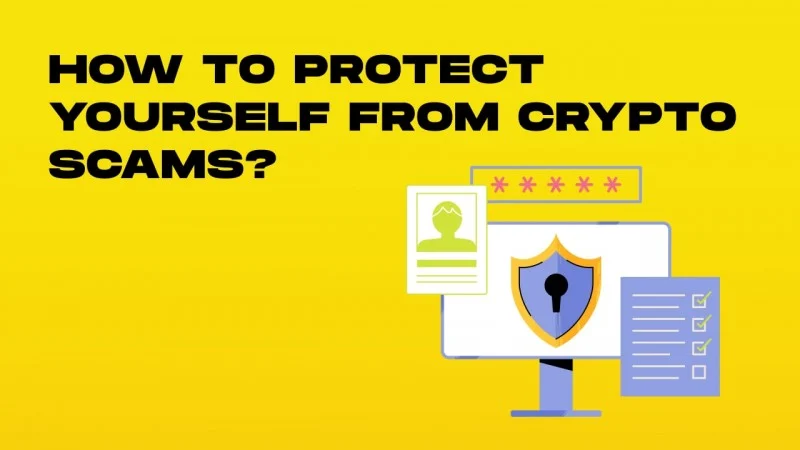How to Protect Yourself from Bitcoin and Cryptocurrency Scams
Introduction
Cryptocurrencies like Bitcoin have gained massive popularity as digital assets with potential for high returns. However, this popularity also makes them attractive targets for scammers. Cryptocurrency scams can range from fake investment schemes and phishing attempts to fraudulent exchanges and wallet scams. This blog will help you recognize and avoid common Bitcoin and cryptocurrency scams to keep your assets safe.
Common Cryptocurrency Scams
Fake Investment Schemes
- Scammers often create fake websites or social media profiles offering “guaranteed” high returns on Bitcoin and cryptocurrency investments. Victims are convinced to deposit funds, but they can never withdraw their profits.
- How to Spot It: Be wary of investment opportunities promising unrealistic returns. Legitimate investments come with risks and no guaranteed profit.
Phishing Attacks
- Fraudsters send emails, messages, or social media links that appear to be from legitimate cryptocurrency platforms. Clicking on these links may lead to fake websites designed to steal your login credentials or private keys.
- How to Spot It: Double-check URLs, avoid clicking on links in unsolicited messages, and enable two-factor authentication for your accounts.
Fraudulent Exchanges and Wallets
- Some exchanges or wallet services may be created solely to steal funds. Users deposit their cryptocurrencies, only to find that the service disappears without a trace.
- How to Spot It: Stick to well-known exchanges and wallets with positive reviews. Avoid newly launched platforms that have no credible background.
Pump and Dump Schemes
- Fraudsters manipulate the price of lesser-known cryptocurrencies by spreading misleading information to drive up demand. Once the price spikes, they sell off their holdings, leaving other investors with worthless coins.
- How to Spot It: Be cautious about following investment advice from anonymous social media sources or unverified “experts.”
Ransomware Attacks
- Scammers may hack into your computer or network, encrypting files and demanding payment in Bitcoin for their release.
- How to Spot It: Protect yourself with strong security measures, regular backups, and avoid clicking on suspicious links.
Fake ICOs (Initial Coin Offerings)
- Fraudulent projects may launch fake ICOs, promising groundbreaking technology and high returns, only to disappear after collecting investors’ money.
- How to Spot It: Thoroughly research any project, check the team’s credibility, and be cautious of vague whitepapers or unproven claims.
Red Flags to Watch For
- Promises of guaranteed or risk-free returns.
- Unsolicited messages or emails about investment opportunities.
- Pressure to “act now” or fear of missing out (FOMO).
- Suspicious-looking websites or requests to share private keys.
- Anonymous or unverified social media accounts promoting investments.
How to Protect Yourself
- Use Reputable Platforms: Only trade or store cryptocurrency on well-known exchanges and wallets with strong security protocols.
- Enable Two-Factor Authentication (2FA): Use 2FA for all crypto-related accounts to add an extra layer of protection.
- Secure Your Private Keys: Keep your private keys offline (cold storage) and never share them with anyone.
- Research Before Investing: Conduct due diligence on any crypto project, team members, whitepapers, and the overall market sentiment.
- Beware of Phishing Attempts: Double-check URLs, avoid clicking on links from unknown sources, and confirm communications with the platform.
- Use Hardware Wallets: Store large amounts of cryptocurrency in hardware wallets to protect against hacks and online theft.
What to Do If You’re a Victim
- Report the Scam: Contact your local law enforcement, as well as online fraud platforms such as the Internet Crime Complaint Center (IC3) at www.ic3.gov.
- Notify the Exchange or Wallet Provider: If your funds were stolen from an exchange, report it to their customer support team.
- Be Transparent: Share your experience with others online to warn them of potential scams.
- Strengthen Your Security: Change passwords, implement stronger security measures, and review all connected crypto accounts for suspicious activity.
Conclusion
The rise of cryptocurrency has opened the door for new types of scams, but by staying informed and vigilant, you can protect yourself and your digital assets. Always question too-good-to-be-true offers, avoid sharing sensitive information, and rely on trusted platforms for trading and storage. By following these guidelines, you can minimize your risk and safely enjoy the benefits of cryptocurrency.







